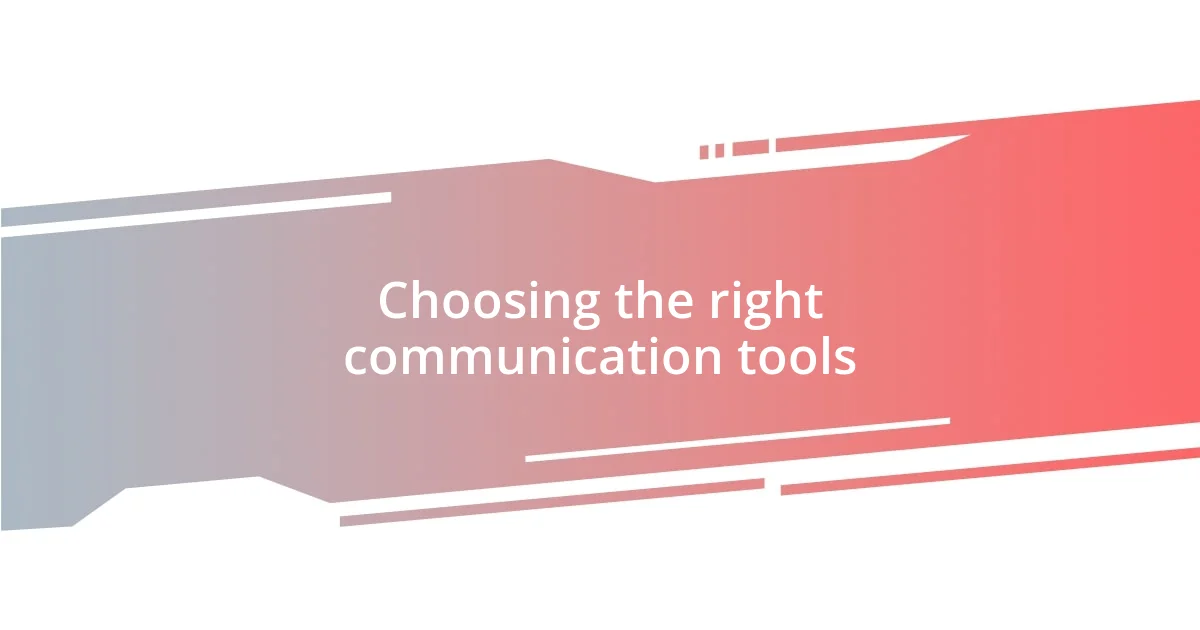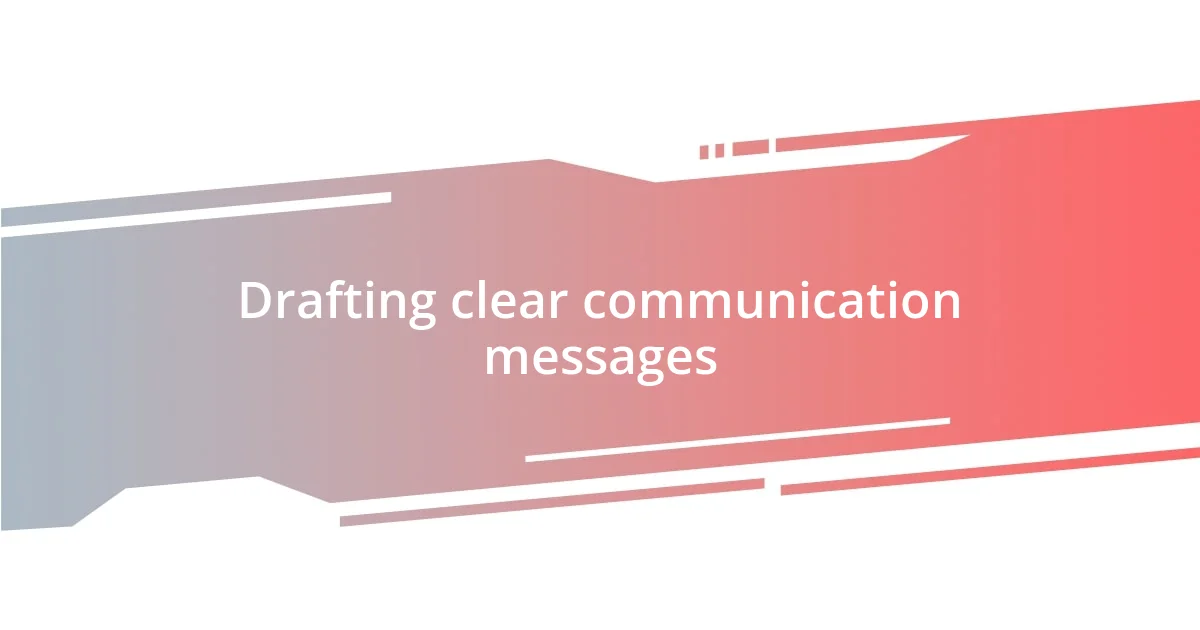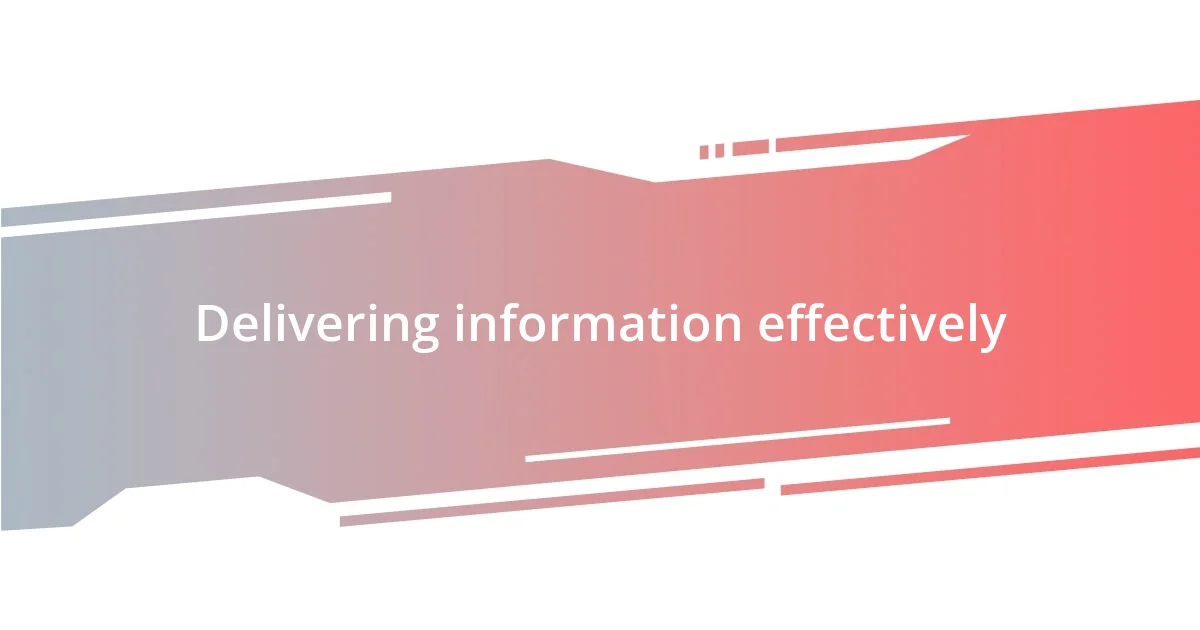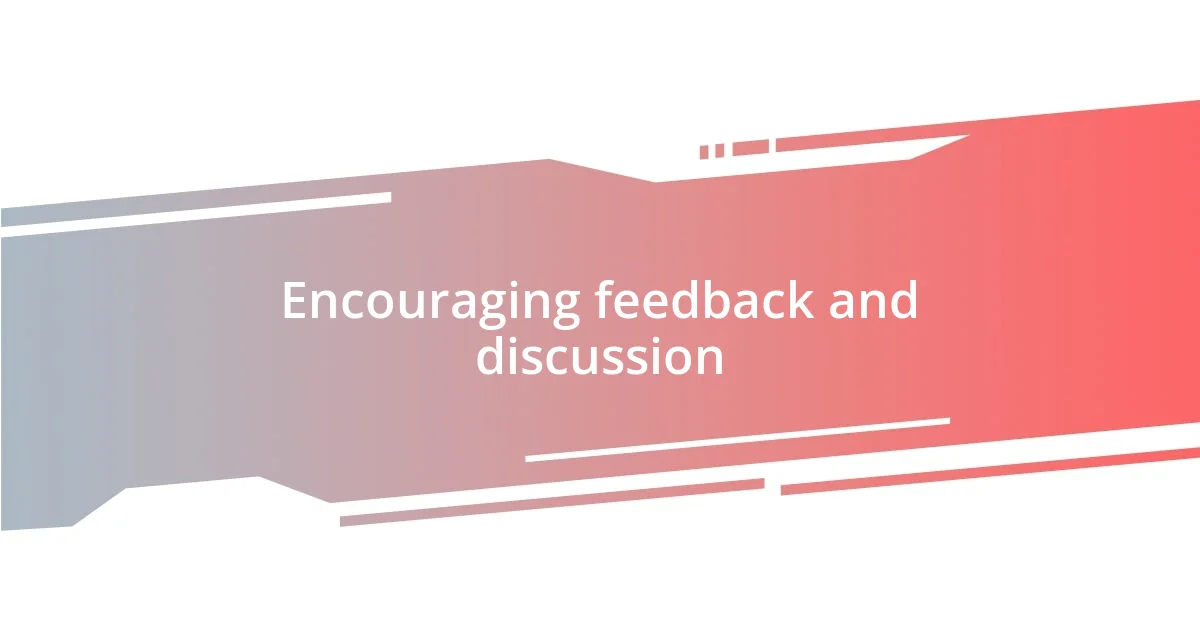Key takeaways:
- Understanding regulatory changes requires grasping their broader implications and underlying purposes to motivate teams to embrace them.
- Tailoring communication to individual team members’ preferences enhances collaboration and minimizes misunderstandings.
- Encouraging ongoing feedback and informal assessments fosters open dialogue, improves understanding, and strengthens team dynamics.

Understanding regulatory changes
Understanding regulatory changes can feel like navigating a maze full of unexpected turns. I recall a time when new compliance rules were rolled out quickly, and I had to grasp them on the fly. How can anyone make sense of changes that seem to multiply daily?
It’s not just about memorizing new regulations; it’s about grasping the broader implications they bring to our operations. I often find myself thinking about how these changes may affect my team’s workflows. After all, when regulations shift, it can mean alterations in our daily processes, which can be overwhelming at first.
Moreover, diving deeper into the reasons behind regulatory changes can reveal their underlying purpose. I remember a particularly complex change regarding data privacy that, at first glance, seemed like a bureaucratic hurdle. But once I understood the rationale—protecting our clients’ information—I found myself motivated to help my team embrace the changes, viewing them as an opportunity to enhance our trustworthiness instead of just another obstacle.

Identifying team communication needs
Identifying the communication needs of my team is often an eye-opening experience. I’ve found that just assuming everyone understands the same way can lead to misunderstandings. During one project, I quickly realized that some team members preferred visual aids while others thrived on detailed written reports. By recognizing these differing preferences, I tailored my communication, enhancing our collaboration and minimizing confusion.
It’s essential to take the time to assess what each team member requires. One approach that really works for me is direct conversation—simply asking them what they need to stay informed and feel confident about the changes. I remember a particularly insightful chat with a colleague who expressed a preference for quick meetings over lengthy emails. That simple request helped streamline our communication and made my team feel more connected.
I often suggest gathering feedback regularly, as it encourages a culture of open dialogue. After one regulatory change, I sent out a short survey to gauge how effectively I communicated the updates. The responses highlighted areas for improvement and showed me the importance of adapting my style. It’s a transformative experience, seeing the team engage more fully when their communication needs are prioritized.
| Communication Needs | Approaches |
|---|---|
| Visual Learners | Present charts and diagrams |
| Detail-Oriented | Provide comprehensive documentation |
| Interactive Communicators | Encourage discussions and quick meetings |

Choosing the right communication tools
Choosing the right communication tools can significantly impact how effectively my team understands regulatory changes. I’ve discovered that using a blend of digital and in-person communication methods often leads to the best results. For example, after introducing a new compliance regulation, I combined a visual presentation with a comprehensive Q&A session. This approach not only clarified the details but also allowed the team to express their concerns and ask questions on the spot, fostering an atmosphere of collaboration.
When selecting communication tools, it’s essential to consider the preferences and dynamics of your team. Here are some tools I’ve found particularly useful:
- Video Conferencing: For real-time interactions when discussing complex topics.
- Instant Messaging Apps: To enable quick, informal communication for immediate questions.
- Shared Documents: For collaborative editing and easy access to essential information.
- Project Management Software: To keep track of tasks related to regulatory changes, ensuring accountability.
By combining various methods tailored to my team’s needs, I’ve seen firsthand how engagement and understanding improve tremendously. Each tool plays its part in creating a robust communication framework that makes regulatory changes less daunting.

Drafting clear communication messages
Drafting clear communication messages is all about being concise yet thorough. I remember one instance where I had to explain a complex regulatory update. Instead of overwhelming my team with jargon, I broke it down into bite-sized pieces. When I used bullet points for key takeaways, it transformed our discussion from confusion to clarity. Have you ever noticed how simple formats can make dense information feel manageable?
Another strategy I’ve found effective is using analogies to illustrate concepts. During one team meeting, I compared compliance protocols to a roadmap, highlighting how each regulation is a crucial checkpoint on our journey. This metaphor helped everyone visualize the changes and their implications. Can you think of a time when a simple analogy made a complicated topic click for you?
Lastly, I always emphasize the importance of inviting questions in my communication. I’ve learned that when I explicitly state that there are no “bad” questions, it opens the floor and encourages my team to engage. After one message where I invited feedback, I was pleasantly surprised by the depth of conversation that followed. It reminded me that communication is a two-way street and creating an environment where everyone feels comfortable to voice their thoughts is invaluable. How do you foster such an open dialogue within your team?

Delivering information effectively
Delivering information effectively hinges on my ability to convey messages in an engaging manner. Recently, I faced the challenge of communicating a last-minute regulatory change that affected multiple departments. Instead of sending a lengthy email, I opted for a short video message where I spoke directly to my team. This personal touch not only humanized the information but also conveyed urgency—do you think people respond better to watching a face than reading a text? I certainly believe they do.
Additionally, I’ve discovered the power of storytelling in making regulations relatable. During a team meeting, I shared a personal experience about a similar situation I encountered earlier in my career. It not only helped to contextualize the regulatory changes but also made the information feel more relevant and less abstract. This approach often prompts conversation; have you ever noticed how stories can spark interest and understanding where dry facts fail?
Finally, actively listening to my team’s feedback has been a game-changer. After one particularly complex update, I created a short survey to gauge their understanding and gather any lingering questions. The results revealed gaps I hadn’t identified, and addressing these directly not only helped many but also strengthened the bond within our team. How often do you take the pulse of your team’s comprehension in times of change? I find that it’s a valuable tool for enhancing communication and trust.

Encouraging feedback and discussion
Encouraging feedback is a vital component of fostering a collaborative environment. I distinctly remember a time when I introduced a new reporting process to my team. After outlining the changes, I encouraged them to share their thoughts in real-time. The conversation that ensued not only highlighted some potential roadblocks I hadn’t considered, but it also made team members feel valued and involved in the decision-making process. Have you ever seen how inviting feedback can transform a simple announcement into a collective effort?
During one meeting, I set aside dedicated time specifically for discussion after explaining a regulatory shift. I asked open-ended questions like, “What concerns do you have about implementing this?” This approach allowed my team to voice their apprehensions and brainstorm solutions together. Watching them engage with one another was incredibly rewarding; it transformed a potentially stressful topic into a collaborative problem-solving session. It’s amazing how creating space for discussion can shift the team dynamics, don’t you think?
I’ve also found that regular check-ins can keep the lines of communication open long after the initial announcement. After rolling out a new compliance framework, I scheduled follow-up sessions to revisit any challenges my team faced. During these meetings, I urged everyone to share their experiences, which led to rich discussions and sometimes laughter as we navigated our way through the hurdles. It truly affirmed my belief that communication is most effective when it’s ongoing and not just a one-time event. How do you maintain ongoing feedback loops with your team?

Tracking understanding and compliance
Tracking understanding and compliance can be challenging, but I find that leveraging informal assessments often proves invaluable. After communicating new regulatory changes, I sometimes create a brief quiz for my team, asking them to summarize key points in their own words. It’s surprising how these simple exercises reveal not just their grasp of the information but also spark discussions. Have you ever noticed how a little competition can light up a room?
In one instance, after a major compliance overhaul, I hosted a casual lunch-and-learn session. I encouraged my team to come prepared with questions or concerns about the changes over their meals. As we shared bites of pizza, I quickly learned which aspects were clear and which were foggy. It was remarkable how a relaxed atmosphere could foster open dialogue and lead to deeper understanding. Wouldn’t you agree that when people are comfortable, they’re more likely to share their true thoughts?
Additionally, I often track understanding through one-on-one conversations. Following group information sessions, I invite team members to discuss how the changes impact their specific roles. Recently, I sat down with a colleague who was quiet during the main presentation. In our chat, they candidly expressed uncertainty about the nuances of the compliance updates. That moment was a reminder that individual feedback is crucial. Have you considered how personal interactions can uncover insights that group settings may overlook?















